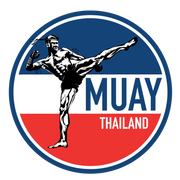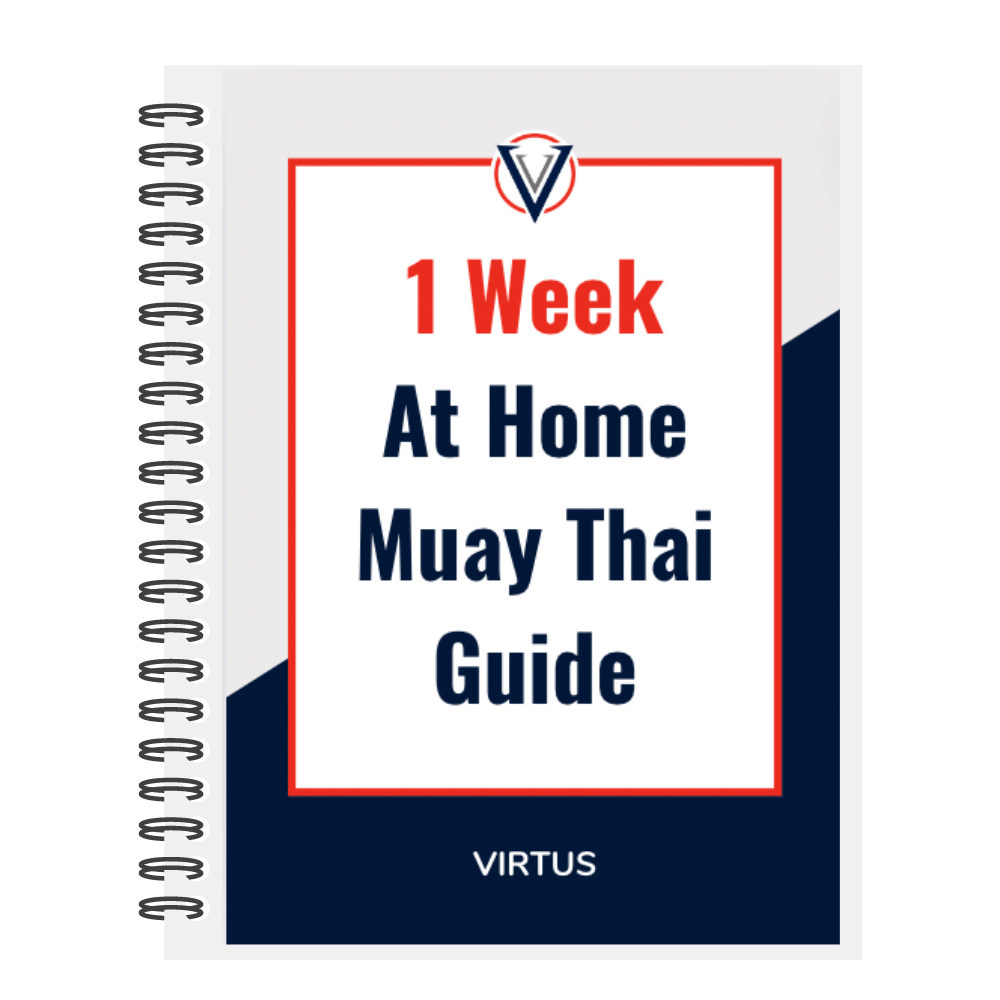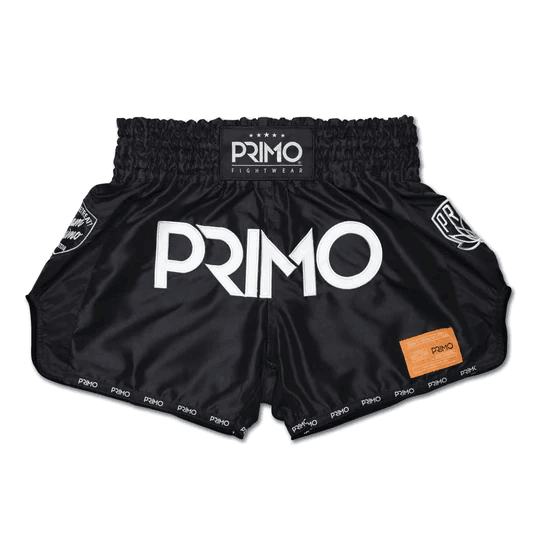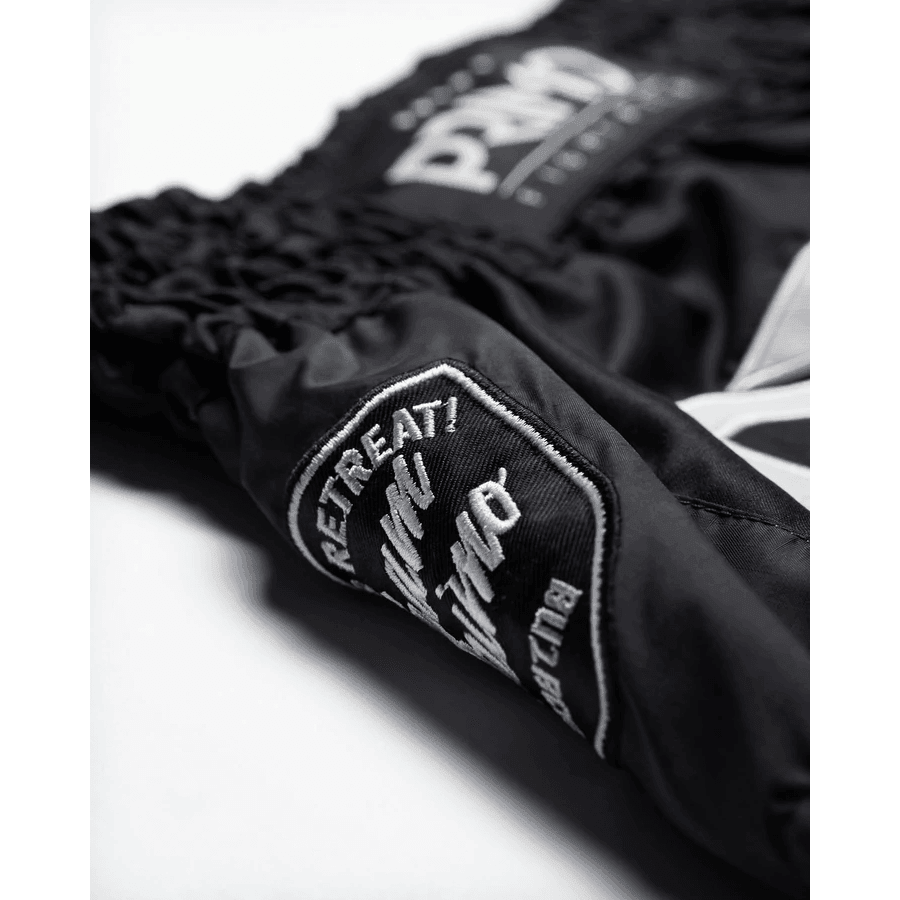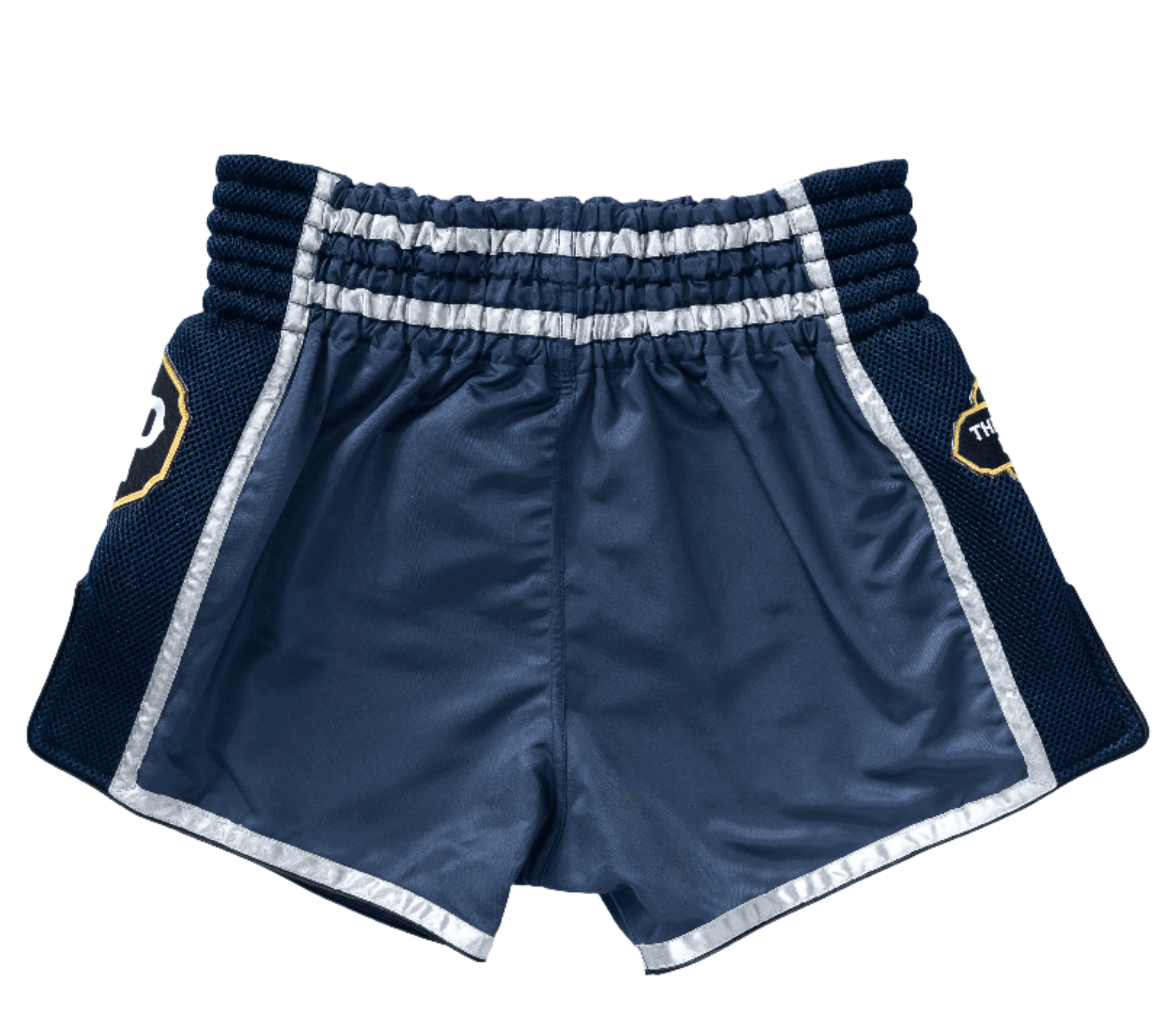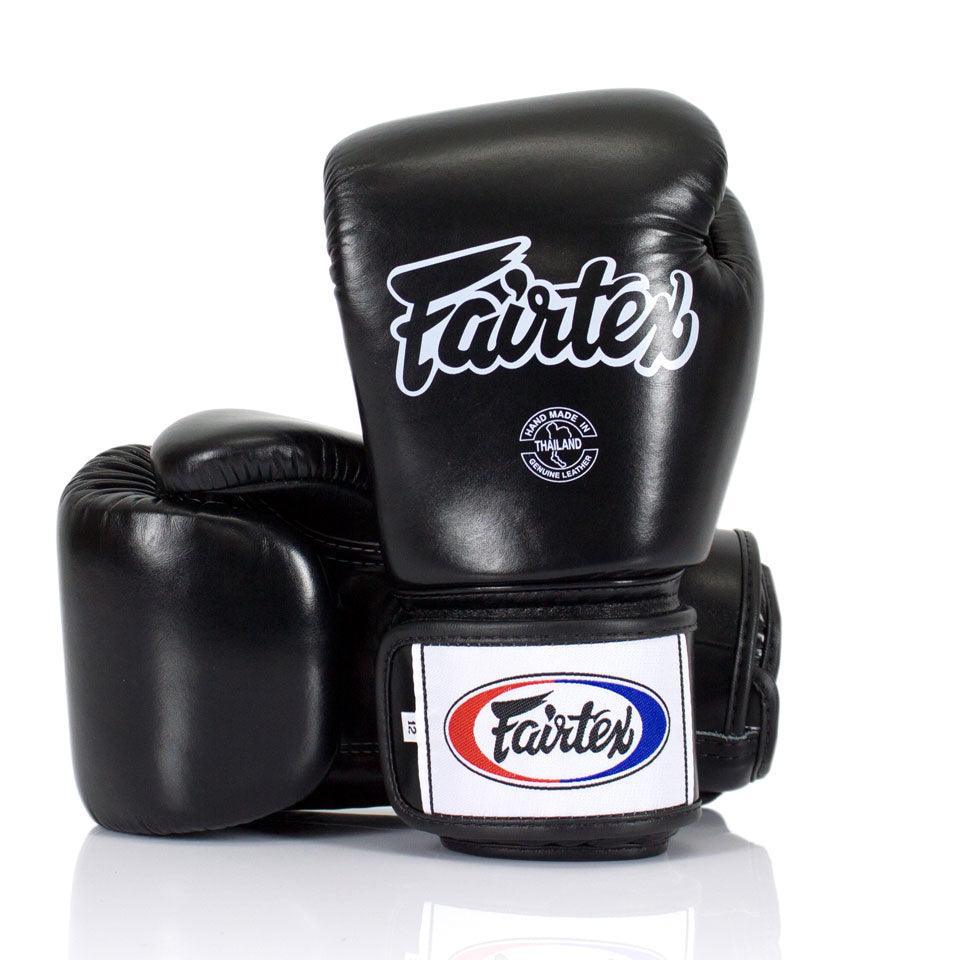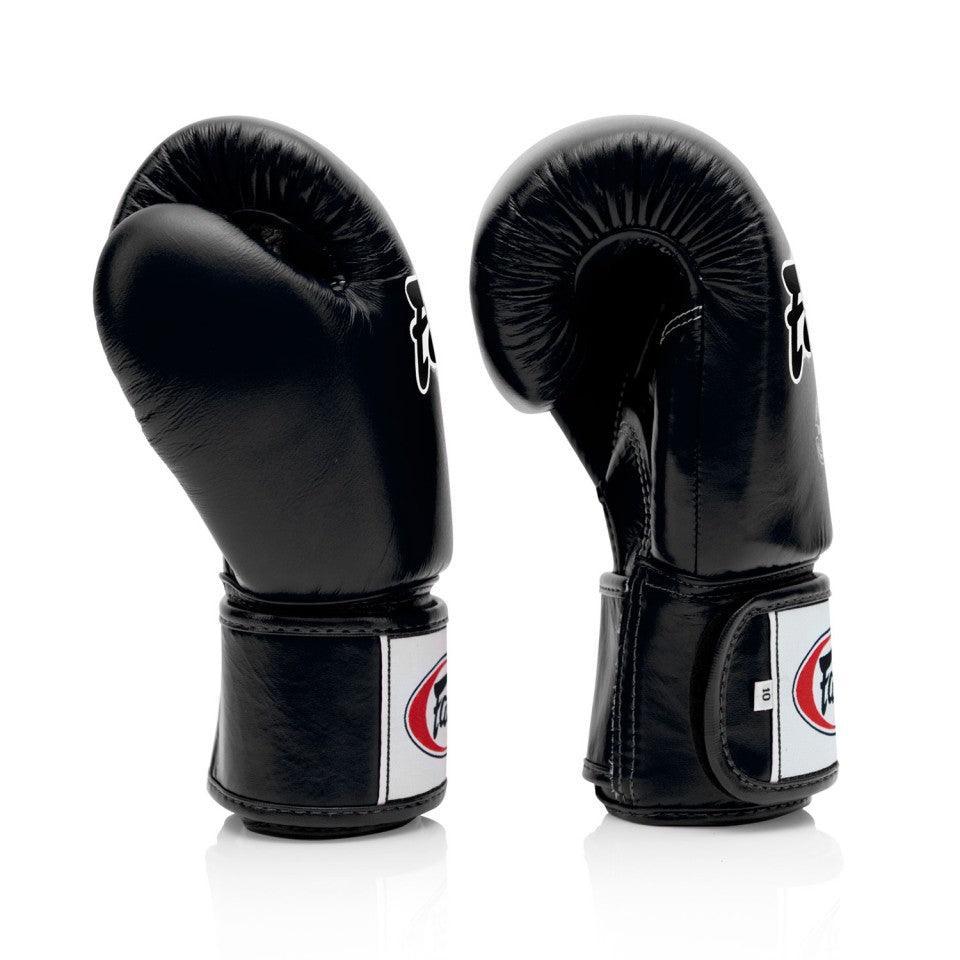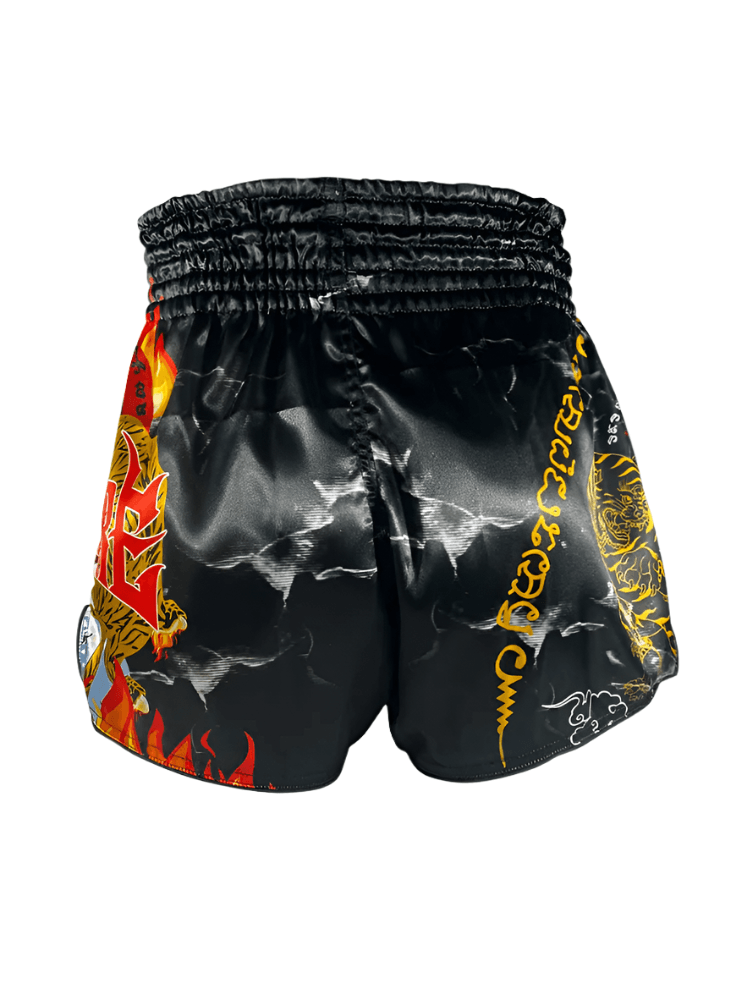Overview
Muay Thai's alternative title The Art of 8 Limbs is not just a reference to the striking points in Muay Thai; it's also about the rich variety of defensive manoeuvres too. Both the legs and arms are comprehensively used to block and redirect all types of attacks, while footwork and a sharp mind present opportunities to minimise damage and set up counters.
Blocking^
The ability to effectively block and check (leg strikes) are key to building a solid foundation in your Muay Thai defense. Essentially, they are ways of having a different area of your body absorb damage instead of the area your opponent intended. Forearms, shins, and gloves are common areas to absorb the damage while elbows and knees are useful for deflecting and returning the damage in a block. Checking with your shins is the perfect way to block leg and body kicks, allowing you to stay in a position to counter immediately. Clashing shins may hurt, but with hard work to condition your legs and the numbing effect of adrenaline during a fight, the blow will be softened.
The Fighter's Lab
The Fight Centre - Brisbane
Redirection^
Redirecting incoming strikes minimises potential damage and opens up opportunities to counter. In Muay Thai, we can parry all types of strikes - although it's risky to parry low kicks - with varying difficulty. Parrying is a risky option to defend against a full-blown kick or knee too.
Evasion^
Evading a strike involves moving your body out of your opponents' striking range, forcing them, and sometimes you, to reposition before attacking again. When done properly, evasion helps you get out of range with zero damage, however, it's easy to get caught if the distance and timing are misjudged.
Head Kru Chris Clodfelter @ 8 Points Muay Thai
Lerdsila via Lawrence Kenshin
Avoidance^
Avoidance and evasion are very similar forms of defense as both are meant to ensure little or no damage is received from incoming strikes. However, avoidance involves moving just a particular area of your body out of the way, as opposed to repositioning your whole body. This means you remain in range and can quickly and easily counter after avoiding an attack. Avoiding high/low kicks and slipping straight punches are common examples that involve slight movements which are very effective at making your opponent miss. Just as with evasion, proper timing and distance are key.
Khom Phiphitsala @ Phiphitsala Gym, Prague, Czech Republic
Yogendra Parekh @ Black Widow Muay Thai via Warrior Colletive
Anticipation^
Anticipating strikes and catching them gives you control of your opponent, presenting opportunities to counter, sweep and trip. As with avoiding and evading, timing is key. Stepping away from the kick as you catch it helps minimise damage.
Sean "English" Hinds via Howcast
Malaipet Sasiprapa via David Huey
Disruption^
By pre-empting incoming strikes, you can step in or throw one of your own to disrupt your opponent and stop them in their tracks.
Damon Faulkner @ Singdayt Muay Thai Gym
Malaipet Sasiprapa via David Huey
Counters^
Countering an incoming strike typically starts by using one of the other defensive techniques and then exploiting the gap that opens up in opponent's defence as a result. While counters can be thrown using any of our Muay Thai weapons, it's crucial that they are quick, accurate and powerful for maximum effectiveness.
Conditioning^
Without proper conditioning, our ability to defend all types of incoming strikes is hampered as we won't be able to absorb strikes and reduce potential damage. Conditioning is a passive form of defense and forms a central role to the effectiveness of our overall defence. It's important that we condition our muscles and bones properly so we can take strikes when necessary.
Effective conditioning is a gradual process that takes time. In training, you will naturally develop your shin conditioning by kicking pads, heavy bags and sparring and should be complimented by regular cardio, circuit training and ab workouts to strengthen the core muscles. If, however, you want to focus on improving your conditioning, there are drills you can do that will help accelerate the process. Common conditioning drills include repetitive kicking on the heavy bag, a partner hitting your abs with a thai pads between sit-ups and light/medium power kicks to the legs and body (with and without shin guards).
Aaron Gasser AKA The Ginger Ninja Trickster
Via Namsaknoi Muay Thai
Tips & Tricks^
As we defend against "8 limbs" in Muay Thai, it's important to build a strong defense from top to toe. The diverse range of variations taught for individual striking techniques is matched by an equally diverse range of defensive manouveurs for each area of defense. The inherent creativity of Muay Thai means we can all learn new and unusual tips and tricks from fighters, coaches, fans and gyms the world over.
Malaipet Sasiprapa via David Huey
What is Muay Thai Long Guard?
The Muay Thai Long Guard is a defensive technique used in Muay Thai and other combat sports. It involves extending one arm straight out in front of you, with the palm facing outward and the elbow slightly bent. The Long Guard can be used to create distance between you and your opponent, deflect incoming strikes, or control your opponent's movements. It's useful for gauging range and putting pressure on your opponent, however, it leaves you open to kicks on the side of the extended arm and uppercuts up the middle.
Yet if you can use the Long Guard effectively, you can protect yourself from attacks and set up counterattacks to frustrate and pressure your opponent.
